
The entrance facade from an 1897 magazine photograph
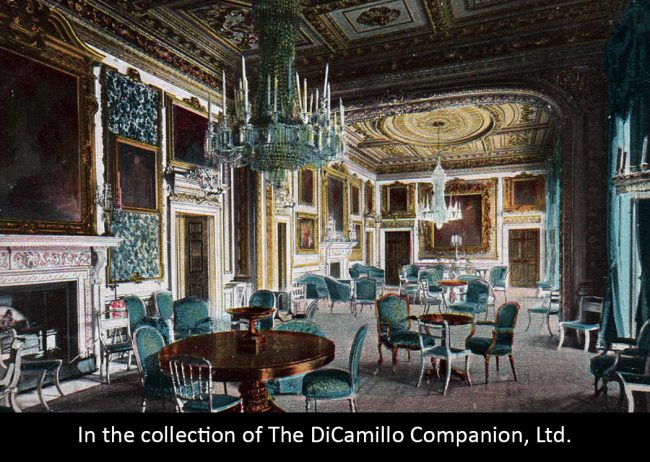
The ballroom from a circa 1895 colored photograph
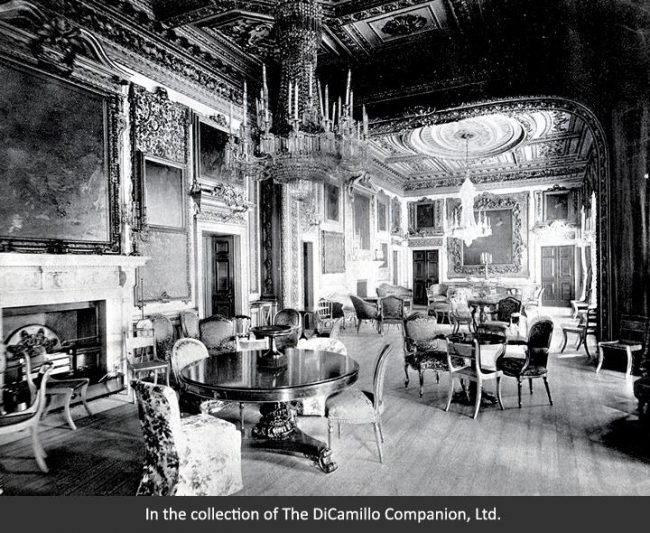
The ballroom from an 1894 photo

A cutaway drawing of the house from the Dec 3, 1921, edition of "The Sphere."
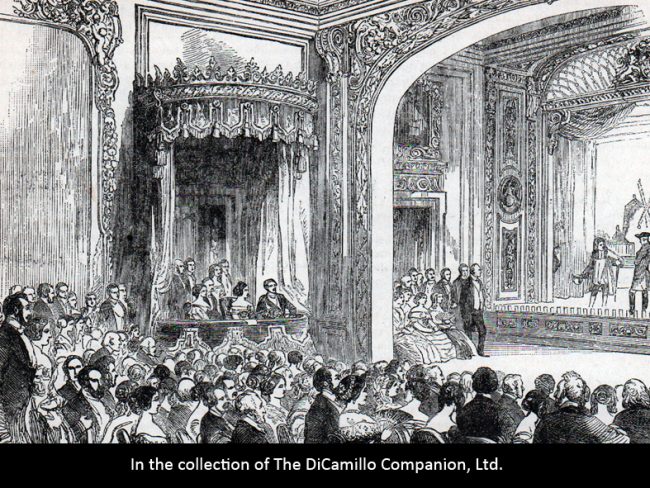
The theatre from an 1851 illustration

The site of Devonshire House in Piccadilly in 2001
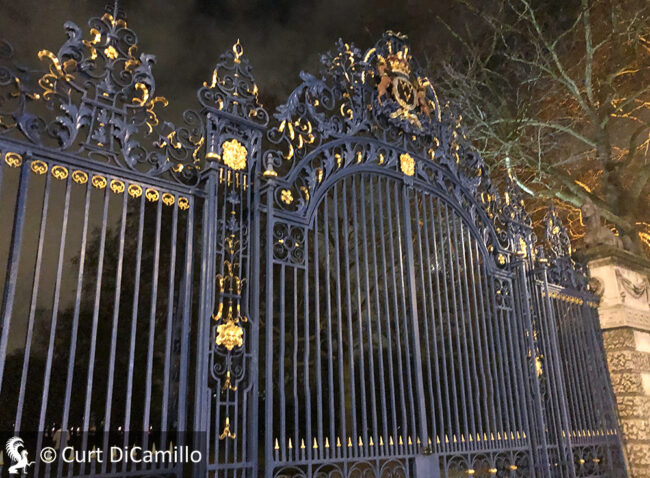
The entrance gates from Devonshire House, today in Green Park.
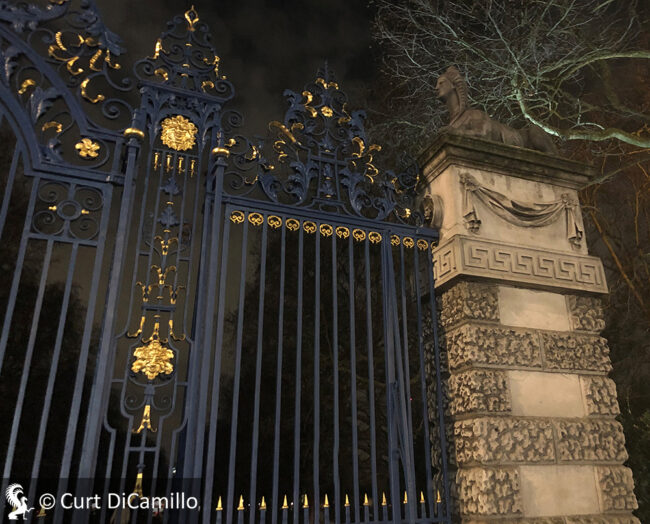
The entrance gates from Devonshire House, today in Green Park.
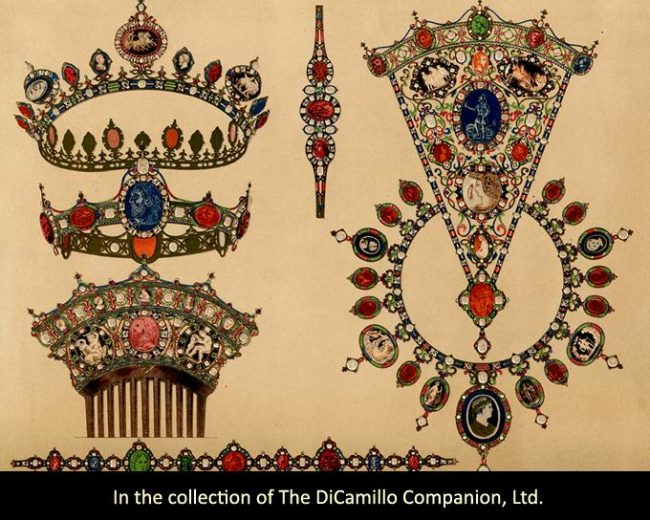
An 1863 chromolithograph print of the Devonshire Gems from Masterpieces of Industrial Art & Sculpture, at the International Exhibition, 1862.
Earlier Houses: An earlier house was burned down in 1733 and replaced by William Kent's house. The Jackdaw's Castle folly (circa 1740) at Highclere Castle includes Corinthian columns salvaged from the first Devonshire House.
Built / Designed For: 3rd Duke of Devonshire
House & Family History: The first Devonshire House was burned to the ground in 1733; the replacement was famously designed by William Kent in the mid-18th century and was located across from what is now the Ritz Hotel. For over a century Devonshire House was THE London center of the Whig political and literary world. The public rooms were more opulent and larger than any heretofore seen in the capital and the house was famous for its parties, particularly in the late 18th and early 19th centuries, when the Prince Regent (later George IV) was a frequent visitor (over 1,200 people could easily be accommodated in the course of one night's entertaining). The house was particularly famous for its magnificent marble staircase with its gilded iron-work balustrade and glass handrail. In the early 19th century, during the reign of the 6th Duke, a close friend of the Prince Regent, Devonshire House hosted the king of Prussia, the Russian tsar (the 6th Duke was appointed ambassador extraordinary to the Russian Empire on the coronation of Tsar Nicholas I in 1826), and the prince of Orange in the ballroom (see photo in "Images" section). When the Cavendish family sold Devonshire House in 1918, the majority of the furniture Kent designed for the house was moved to Chatsworth (much of it was sold at the Chatsworth Attic Sale October 5-7, 2010). Devonshire House was demolished 1924-25; between 1925 and 1926 an office and apartment building, also called Devonshire House, was erected on the site of the great house. The wrought-iron entrance gates were re-erected across Piccadilly to form an entrance to Green Park. The Devonshire House wine cellar is now the ticket office of the Green Park Underground station.
Collections: The paintings at Devonshire House comprised one of the finest collections in England, including Poussin's "Et in Arcadia Ego" and Rembrandt's "Old Man in Turkish Dress." Between October 5 and 7, 2010, as part of the £6.5 million Chatsworth Attic Sale, 1,416 lots were sold by Sotheby's in a marquee on the Chatsworth Estate, including many objects removed from Devonshire House prior to its demolition and stored in the attics at Chatsworth. Furniture, doors, wall carvings, and bookcases from Devonshire House were sold in the 2010 sale; the two most expensive items were George II carved white marble chimneypieces designed by William Kent circa 1735 for the saloon (£565,250, lot 82) and the ballroom (£457,250, lot 109).
Comments: The London topographer James Ralph wrote "It is spacious, and so are the East India Company's warehouses; and both are equally deserving of praise."
Architect: James Wyatt
Date: 1776-90Architect: Decimus Burton
Date: 1843Architect: William Kent
Date: 1734-40
Title: Biographical Dictionary of British Architects, 1600-1840, A - SOFTBACK
Author: Colvin, Howard
Year Published: 1995
Reference: pgs. 197, 584, 1120
Publisher: New Haven: Yale University Press
ISBN: 0300072074
Book Type: Softback
Title: Georgiana: Duchess of Devonshire
Author: Foreman, Amanda
Year Published: 1998
Publisher: New York: Random House
ISBN: 0375502947
Book Type: Hardback
Title: Chatsworth Visitor Guide
Author: Duchess of Devonshire
Year Published: 1997
Publisher: Derbyshire: Derbyshire Countryside Ltd
ISBN: 0851001181
Book Type: Softback
House Listed: Demolished
Park Listed: Destroyed
Past Seat / Home of: William Cavendish, 3rd Duke of Devonshire, circa 1740-55; William George Spencer Cavendish, 6th Duke of Devonshire, 1811-58; Victor Christian William Cavendish, 9th Duke of Devonshire, 1908-24; Cavendish family here from the 1730s until 1924.
Current Ownership Type: Demolished
Primary Current Ownership Use: Demolished
Ownership Details: Demolished in 1924 and replaced by Devonshire House flats.
House Open to Public: No
Historic Houses Member: No